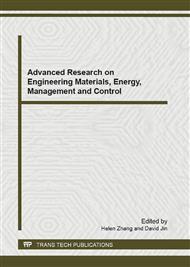p.881
p.885
p.890
p.894
p.900
p.904
p.908
p.912
p.916
Solving the Dynamic Model of Metabolic Network of Escherichia coli by Adams Methods
Abstract:
We previously analyzed the dynamic flux distribution and predicted glucose, biomass concentrations of metabolic networks of E. coli by using the penalty function methods. But the consequences were not as well as we expected. In order to improve the predicated accuracy of the metabolite concentrations, instead of using Runge-Kutta algorithm, we apply Adams methods which belong to the multi-step ones in the process that solves the dynamic model of metabolic network of E. coli and obtain better simulation results on the metabolic concentrations.
Info:
Periodical:
Pages:
900-903
Citation:
Online since:
January 2012
Authors:
Keywords:
Price:
Сopyright:
© 2012 Trans Tech Publications Ltd. All Rights Reserved
Share:
Citation:


